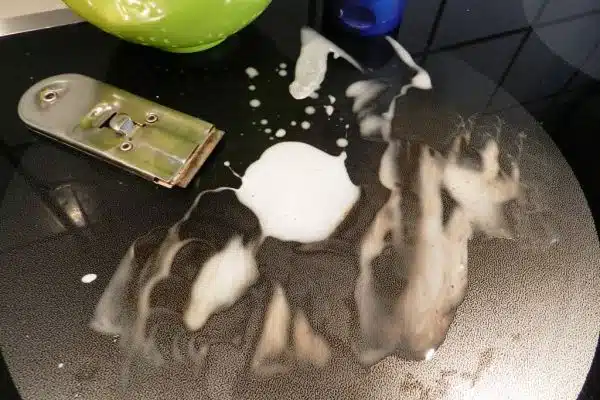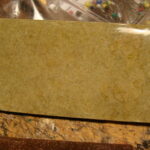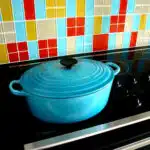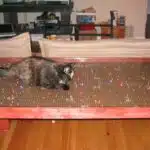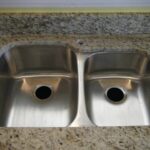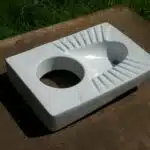As a cooktop cleaning expert, I have seen countless glass stove tops that have been neglected and left with stubborn stains and residue. A clean cooktop not only improves the appearance of your kitchen but also helps to enhance your cooking experience. However, many people find it challenging to clean their glass cooktops effectively without causing damage or scratches.
In this article, I will share tips and techniques on how to clean a glass cooktop safely and efficiently. From using the right tools to choosing the right cleaning products, I will provide you with all the information you need to keep your cooktop spotless and in perfect condition. Whether you are a professional chef or a home cook, this article will equip you with the knowledge necessary to achieve a sparkling and hygienic cooking surface that will impress your guests and make your cooking experience much more enjoyable.
Preparing Your Cooktop For Cleaning
When it comes to cleaning a glass cooktop, proper preparation is key. Before beginning the cleaning process, be sure that the surface is cool to the touch. Attempting to clean a hot or warm cooktop may result in burns or damage to both the cooktop and any cleaning tools being used.
Next, remove any loose debris from the cooktop surface. This may include food crumbs, dust, or other small particles that can accumulate on the surface over time. Use a soft cloth or paper towel to gently wipe away any loose debris without applying too much pressure.
One of the most common mistakes made when cleaning a glass cooktop is using abrasive materials that can scratch or damage the surface. Avoid using steel wool pads, rough sponges, or harsh chemicals that can strip away protective coatings and cause discoloration. Instead, opt for gentle cleaners specifically designed for use on glass cooktops and always check product labels for compatibility with your specific brand of appliance.
Moving forward into gathering the right tools and materials for cleaning your glass cooktop, it’s important to have everything you need on hand before beginning the process.
Gathering The Right Tools And Materials
Sponges, cloths, and soap should be used when cleaning a glass cooktop, as they are gentle yet effective cleaning materials. Baking soda, vinegar, and a plastic scraper may be used to remove stubborn, caked-on debris. A cooktop cleaner should also be used to ensure a thorough clean. Gloves, safety glasses, and a drop cloth should be worn to protect oneself and surrounding surfaces from chemicals and debris. A razor blade, scrubbing pad, steel wool, and rubber spatula can be employed on the toughest spots, but with caution. Lastly, paper towels should be kept on hand to wipe the surface dry.
Sponges
When it comes to gathering the right tools and materials for cleaning a glass cooktop, sponges are an essential item. However, not all sponges are created equal. It is important to choose the right sponge for the job to ensure that your cooktop is cleaned properly without causing any damage.
One alternative to traditional sponges is a microfiber cloth. These cloths are gentle on surfaces and can effectively remove dirt and grime without scratching or leaving behind residue. Another option is a nylon scrubber, which can be used for tougher stains but should be used with caution to avoid scratching the glass surface.
Proper sponge maintenance is also crucial for effective cleaning. After each use, rinse your sponge thoroughly with hot water and wring it out completely. To prevent bacteria growth, allow the sponge to air dry or place it in a well-ventilated area. Replace sponges regularly to prevent buildup of bacteria and debris.
In summary, choosing the right sponge for your glass cooktop cleaning needs and maintaining it properly are important factors in achieving a sparkling clean surface without causing damage. Consider using alternative options such as microfiber cloths or nylon scrubbers, but always prioritize gentle handling of the delicate glass surface.
Cloths
When it comes to cleaning a glass cooktop, having the right tools and materials is essential. Along with sponges, cloths are also an important item to consider. Microfiber cloths are a popular alternative to traditional sponges as they are gentle on surfaces and can effectively remove dirt and grime without scratching or leaving behind residue. These cloths are reusable and can be washed easily after use.
Disposable cloths are another option for cleaning a glass cooktop. These pre-moistened cloths come in convenient packaging and can be disposed of after use. However, it is important to note that not all disposable cloths are safe for use on glass surfaces. Always check the package label before using them on your cooktop.
Proper cloth maintenance is also crucial for effective cleaning. After each use, wash microfiber cloths with hot water and soap, then rinse thoroughly and hang dry. Disposable cloths should be discarded after use to prevent bacteria growth. By choosing the right cloth for your needs and maintaining it properly, you can achieve a sparkling clean glass cooktop without causing any damage.
In conclusion, choosing the right cloth for cleaning a glass cooktop is just as important as selecting the right sponge or other materials. Microfiber cloths offer a gentle yet effective option for surface cleaning while disposable cloths provide convenience but with limitations on their usability on delicate surfaces like glass cooktops. Proper maintenance of these items will ensure maximum effectiveness in achieving your desired result: a clean and shiny surface that adds beauty to your kitchen space!
Soap
One essential tool for cleaning a glass cooktop is soap. However, using the wrong type of soap can cause damage to delicate surfaces. When cleaning a glass cooktop, it is important to choose a soap that is safe and effective.
Using soap on delicate cooktops requires caution. Abrasive or harsh soaps can scratch the surface and leave behind residue that is difficult to remove. To avoid these issues, consider using gentle dish soap or specialized cooktop cleaner. These products are designed specifically for use on glass cooktops and will not cause any damage.
Alternatively, there are soap alternatives for cleaning cooktops. Natural cleaners like vinegar and baking soda can be effective at removing tough stains without causing any damage. Simply mix equal parts vinegar and water in a spray bottle and apply to the surface before wiping with a microfiber cloth. Baking soda can also be used by creating a paste with water and applying it to the stains before wiping away with a damp cloth. With these options, you can effectively clean your glass cooktop without having to worry about damaging it with harsh chemicals or abrasive soaps.
Removing Loose Debris And Food Particles
A clean cooktop is a reflection of a well-maintained kitchen. But cleaning the glass cooktop can be intimidating, especially with loose debris and food particles stuck on it. However, removing these unwanted elements from your cooktop is essential to ensure optimal performance and longevity.
To start, use a vacuum cleaner to remove any large debris from the surface. This will save you time and energy when it comes to scrubbing off tougher stains later. If you don’t have a vacuum cleaner, gently shake off the crumbs from the cooktop’s surface using your hands or a soft cloth.
Next, wipe down the surface with a damp cloth or paper towel to remove any remaining dirt or debris. Avoid using abrasive materials that can scratch the glass surface of your cooktop. Instead, opt for gentle cleaners or natural solutions like vinegar and baking soda.
Finally, inspect your cooktop closely for any missed spots before proceeding further. Ensure that every inch of it is free from loose debris and food particles before moving on to the next step – using a razor scraper for tough stains. With these steps, you’ll be able to achieve that flawless glass look on your cooktop in no time!
Using A Razor Scraper For Tough Stains
After removing loose debris and food particles from your glass cooktop, it is important to consider cleaning safety. Always ensure that your cooktop has cooled down completely before proceeding with any type of cleaning method. Wear protective gloves and avoid using abrasive materials or harsh chemicals that can damage the surface of your cooktop.
If you prefer alternative cleaning methods, there are several options available. One popular option is using a mixture of baking soda and vinegar. Simply sprinkle baking soda over the surface of your cooktop and spray vinegar over it. Let the mixture sit for a few minutes before scrubbing gently with a non-abrasive sponge or cloth. Rinse thoroughly with water and dry with a clean towel.
Another alternative method is using lemon juice or hydrogen peroxide. Both are natural cleaners that can effectively remove stains and grime from your glass cooktop. Apply either one onto the surface of your cooktop, let it sit for a few minutes, then wipe away with a damp cloth. Rinse thoroughly with water and dry with a clean towel.
As you move on to applying a cleaning solution to your glass cooktop, consider using one specifically designed for this purpose. In the next section, we will explore how to apply these specialized solutions effectively to achieve optimal results in keeping your glass cooktop looking shiny and new.
Applying A Cleaning Solution
As you begin the process of cleaning your glass cooktop, it’s important to keep in mind that applying a cleaning solution is a crucial step in the process. This step involves using a specialized cleaner and applying it onto the surface of your cooktop. However, before we delve into how you can apply a cleaning solution effectively, let’s first discuss some common mistakes to avoid.
One of the most common mistakes people make while applying a cleaning solution is not following the instructions on the label. It’s essential to use the cleaner as directed by the manufacturer since different cleaners have varying strengths and formulas. Moreover, failing to rinse off excess cleaner can lead to streaks or stains on your cooktop surface. Therefore, ensure that you rinse off all traces of cleaner after application.
When it comes to safety precautions when applying a cleaning solution, always ensure that your kitchen is well-ventilated. Additionally, avoid using harsh chemicals or abrasive materials that may scratch or damage your cooktop surface. Lastly, wear protective gloves and clothing to prevent skin irritation or injury from splashes of hot water during rinsing. By following these guidelines, you can safely apply a cleaning solution onto your glass cooktop without causing any harm or damage.
To continue with maintaining a spotless glass cooktop surface, choosing the right cleaning product is crucial. In the next section, we’ll explore various types of cleaners available in the market and how to select one that suits your needs best.
Choosing The Right Cleaning Product
When it comes to choosing a cleaning product for your glass cooktop, there are several alternatives available in the market. These products are specifically designed to clean and maintain the shine of your cooktop without damaging its surface. Always check the label of the product before buying to ensure that it is safe for use on glass surfaces.
One option for cleaning your glass cooktop is to choose eco-friendly cleaning products. These products contain natural ingredients that are safe for both you and the environment. They do not contain any toxic chemicals or synthetic fragrances, making them an excellent alternative for those who prioritize sustainability.
If you prefer to make your own cleaning solutions, there are several alternatives that you can use instead of commercial products. For example, white vinegar and baking soda work well together as a natural cleaning solution. Simply mix equal parts of white vinegar and baking soda in a bowl until it forms a paste-like consistency. Apply this mixture onto your cooktop and let it sit for 15-20 minutes before wiping it off with a damp cloth.
When it comes to choosing a cleaning product for your glass cooktop, there are several options available including eco-friendly alternatives and DIY solutions. By selecting the right product, you can ensure that your cooktop remains clean and shiny for years to come. In the next section, we will discuss some effective DIY cleaning solutions that you can try at home.
Diy Cleaning Solutions
Homemade cleaners can be a great way to clean a glass cooktop as they are often cheaper and more accessible than other cleaning solutions. Natural cleaners such as white vinegar, baking soda, and lemon juice can provide effective results when used in combination with other cleaning products. It is important to carefully read and follow the instructions on the product packaging when using homemade or natural cleaners to clean a glass cooktop. Additionally, it is important to take the necessary safety precautions when using any type of cleaning product on a glass cooktop.
Homemade Cleaners
Do you want to clean your glass cooktop using homemade cleaners? If so, it’s essential to weigh the benefits and risks of this approach. Homemade cleaners are cost-effective, eco-friendly, and readily available in your kitchen pantry. They can be customized to your cleaning needs and are free of harsh chemicals that may damage your glass cooktop surface. However, there are also risks involved in using homemade cleaners. Some ingredients may harm the glass surface or leave behind stubborn stains that are difficult to remove.
When it comes to the effectiveness of homemade cleaners for cleaning a glass cooktop, they can be as effective as commercial products. For example, vinegar is an excellent natural cleaner that removes grease and grime from your cooktop surface without scratching it. Baking soda is another great option that cleans stubborn stains effectively. However, it’s crucial to follow safety precautions while using these cleaners to avoid any mishaps.
Safety should always be a top priority when cleaning a glass cooktop with homemade cleaners. Always wear gloves and eye protection while handling these substances. Additionally, ensure proper ventilation in your kitchen area to prevent inhaling toxic fumes. In conclusion, homemade cleaners can be an effective and safe alternative for cleaning your glass cooktop if used correctly.
Natural Cleaners
Now that we have discussed the benefits and risks of using homemade cleaners for cleaning a glass cooktop, let’s delve deeper into one type of natural cleaner – DIY cleaner recipes. When it comes to green cleaning alternatives, making your own cleaners is an excellent option as it’s cost-effective, eco-friendly, and customizable to your specific cleaning needs. Plus, you avoid harsh chemicals that may harm your cooktop surface or pose health hazards.
One popular DIY cleaner recipe for a glass cooktop involves mixing baking soda and water to form a paste. Apply the paste onto the cooktop surface, let it sit for 15 minutes, then scrub with a non-abrasive sponge or cloth. Rinse with water and dry with a microfiber towel. Another effective recipe involves combining equal parts of vinegar and water in a spray bottle. Spritz the solution onto the cooktop surface and wipe clean with a microfiber towel.
When using natural cleaners like these DIY recipes, it’s important to follow safety precautions such as wearing gloves and eye protection while handling these substances. Proper ventilation should also be ensured to prevent inhaling toxic fumes. By incorporating these measures into your cleaning routine along with using green cleaning alternatives like DIY cleaner recipes, you can effectively clean your glass cooktop while being mindful of its maintenance and longevity.
Using Baking Soda For Stubborn Stains
As a DIY cleaning solutions expert, I am often asked about the best ways to clean a glass cooktop. While baking soda is a popular choice for removing stubborn stains, there are other alternatives worth considering.
One alternative is white vinegar. Mix equal parts vinegar and water in a spray bottle and apply it to the cooktop. Let it sit for a few minutes, then wipe away with a clean cloth. Another option is using dish soap and warm water. Apply the solution to the cooktop and scrub gently with a non-abrasive sponge.
If you do decide to use baking soda for cleaning your glass cooktop, there are precautions you should take. First, make sure the surface is cool before applying the baking soda. Sprinkle it on the cooktop and use a damp cloth or sponge to create a paste. Avoid using too much pressure when scrubbing as this can scratch the surface. After wiping away the paste, rinse thoroughly with warm water.
When cleaning your glass cooktop, don’t forget about the edges and corners. These areas can accumulate dirt and grime over time, so it’s important to clean them regularly. Use a small brush or toothbrush to get into tight spaces and remove any debris that has accumulated in these areas. With these tips in mind, you can keep your glass cooktop looking like new for years to come!
Cleaning The Edges And Corners
When it comes to cleaning a glass cooktop, one of the most challenging parts is reaching tight spaces and corners. These areas are often overlooked during regular cleaning and can accumulate stubborn grime over time. However, with some simple techniques and tools, you can effectively clean these areas without damaging your cooktop.
To start, use a small brush or toothbrush to loosen any dirt or debris in the edges and corners of your cooktop. Be careful not to apply too much pressure as this can scratch the surface of your cooktop. Once you have loosened the grime, wipe it away with a soft cloth or sponge.
If there are any remaining stubborn stains in these areas, use a specialized cleaner designed for glass cooktops. Apply a small amount of the cleaner onto a soft cloth or sponge and gently scrub the affected area. Be sure to follow the manufacturer’s instructions and avoid using abrasive materials that could damage your cooktop.
Cleaning the edges and corners of your glass cooktop may seem like an arduous task, but it is essential for maintaining its appearance and performance. By following these tips and taking care not to scratch or damage your cooktop, you can ensure that it remains looking like new for years to come.
With the edges and corners now thoroughly cleaned, it’s time to move on to wiping down the rest of your cooktop.
Wiping Down The Cooktop
Moving on to the next step, it is time to wipe down the cooktop. This is an essential process that requires careful attention to detail. Cleaning techniques vary depending on the type of cooktop you have. For glass cooktops, you should use a soft cloth or sponge and a mild cleaning solution.
When wiping down your glass cooktop, be sure to apply even pressure throughout the entire surface area. Avoid using abrasive materials such as steel wool or scouring pads, as they can scratch the surface and cause damage. Instead, opt for a non-abrasive cleaner that is specifically designed for glass cooktops.
In addition to regular cleaning, there are some maintenance tips that you can follow to keep your glass cooktop looking its best. First, avoid allowing spills and food debris to sit on the surface for extended periods of time. These can become difficult to remove over time and may cause discoloration or damage. Second, always use appropriate cookware that is flat-bottomed and does not have rough edges that can scratch the surface. By following these simple tips, you can extend the life of your glass cooktop and maintain its like-new appearance for years to come.
To achieve a sparkling finish on your glass cooktop, buffing and polishing are necessary steps in completing this task effectively.
Buffing And Polishing For A Sparkling Finish
After buffing, it is crucial to polish the glass cooktop to achieve a sparkling finish. Polishing helps remove any remaining streaks or smudges on the surface, leaving it looking clean and shiny. Additionally, polishing helps protect the surface from future stains and scratches, making it easier to maintain its pristine look.
One of the best polishing techniques for a glass cooktop is to use a microfiber cloth. Microfiber cloths are gentle on delicate surfaces like glass and are highly effective at removing any remaining residue or streaks on the cooktop’s surface. To polish using a microfiber cloth, apply a small amount of polishing cream to the cloth and gently rub in circular motions over the entire surface area of the cooktop. Repeat this process until you achieve the desired level of shine.
The benefits of polishing your glass cooktop cannot be overstated. Not only does it leave your cooktop looking spotless and brand new, but it also protects it from future damage caused by spills and scratches. Furthermore, maintaining a consistent polishing routine will ensure that your cooktop remains easy to clean and always looks its best. Now that you know about the best polishing techniques for your glass cooktop let’s move on to how you can maintain its shine for longer periods without spending too much time cleaning in our next section.
Maintaining Your Cooktop’s Shine
After buffing and polishing your glass cooktop, it’s important to maintain its shine. The best way to do this is by using proper cleaning and polishing techniques. One way to ensure that your cooktop stays clean is by wiping up spills as soon as they happen. This will prevent them from hardening onto the surface and becoming more difficult to clean later on.
When it comes to polishing your cooktop, there are a few things you should keep in mind. First, always use a soft cloth or microfiber towel when applying polish. This will help prevent scratches and damage to the surface of the cooktop. Additionally, be sure to follow the manufacturer’s instructions for any specific cleaning products you use.
Preventing scratches and damage is an important part of maintaining your glass cooktop’s shine. One way to do this is by avoiding using abrasive materials or harsh chemicals when cleaning. Instead, opt for gentle cleaners that are specifically designed for glass surfaces. You can also protect your cooktop from scratches by using pots and pans with smooth bottoms, rather than those with rough or textured surfaces. By taking these steps, you can keep your glass cooktop looking shiny and new for years to come.
Preventing Scratches And Damage
Preventing scratches on your glass cooktop should be a priority to maintain its pristine condition. There are several ways to prevent scratches from occurring. Firstly, avoid sliding pots and pans across the surface of the cooktop. Instead, lift them when moving them around. Secondly, do not use abrasive materials or cleaners that contain harsh chemicals as they can cause scratches or damage to the surface of the cooktop.
Choosing cleaners for your glass cooktop is an important aspect of maintaining its cleanliness and prolonging its life span. It is recommended to use a cleaner specifically designed for glass cooktops. These cleaners are formulated to remove tough stains and grease without damaging the surface of the cooktop. Avoid using vinegar or baking soda-based cleaners as they can cause damage or leave a residue on the cooktop.
To further prevent scratches and damage to your glass cooktop, consider investing in protective accessories such as silicone mats or heat-resistant trivets. These accessories provide an extra layer of protection against accidental spills, heat exposure, and potential scratches caused by pots and pans.
Incorporating these preventative measures into your cleaning routine will help keep your glass cooktop looking new for years to come. In the next section, we will discuss common cleaning issues that can arise despite taking preventative measures.
Troubleshooting Common Cleaning Issues
Preventing scratches and damage is crucial to maintaining the longevity of your glass cooktop. However, even with preventative measures in place, common mistakes can occur during cleaning that can cause further damage. It’s important to be aware of these mistakes and take proper steps to avoid them.
One common mistake is using abrasive cleaners or scrubbers on the cooktop surface. These can scratch the glass and leave permanent marks. Instead, use a non-abrasive cleaner specifically designed for glass cooktops, along with a soft cloth or sponge for gentle cleaning.
Another mistake is using too much pressure when cleaning. While it may seem like applying more pressure will result in a cleaner surface, it can actually cause more harm than good. Excessive pressure can lead to scratches and even crack the glass. Instead, use light and even pressure when wiping down the cooktop surface.
| Mistake | Preventative Measure | Professional Cleaning Service Needed? |
|---|---|---|
| Using abrasive cleaners or scrubbers | Use non-abrasive cleaner and soft cloth/sponge | No |
| Applying too much pressure | Use light and even pressure | No |
| Leaving spills or stains for extended periods of time | Clean spills immediately with appropriate cleaner | Yes |
Lastly, leaving spills or stains on the cooktop for extended periods of time can make them harder to clean and potentially cause permanent damage. It’s important to clean up any spills as soon as possible using the appropriate cleaner for the substance that caused the spill.
While preventative measures are key to keeping your glass cooktop in top condition, sometimes professional cleaning services are necessary. For example, if there are scratches or cracks on the surface that cannot be fixed with at-home methods, it may be time to call in a professional for repairs or replacement.
Professional Cleaning Services
When it comes to cleaning a glass cooktop, there are several options available. While some people prefer to tackle the task themselves, others opt for hiring professional cleaning services. Whether you choose to clean your cooktop yourself or hire a professional, it’s important to weigh the benefits and drawbacks of both options.
Cost Comparison: One of the biggest factors in deciding whether to clean your cooktop yourself or hire a professional is cost. DIY cleaning methods tend to be more affordable than hiring a professional cleaner. However, it’s important to consider the potential costs associated with damaging your cooktop during the cleaning process. Professional cleaners have experience and knowledge in handling delicate surfaces, so they may be better equipped to avoid costly mistakes.
Benefits and Drawbacks: DIY cleaning methods offer the benefit of convenience – you can clean your cooktop whenever you want without having to schedule an appointment with a professional cleaner. However, these methods require time and effort on your part, and there’s always the risk of damaging your cooktop if you’re not careful. On the other hand, hiring a professional cleaner offers peace of mind knowing that your cooktop will be thoroughly cleaned without any damage. However, this option can be more expensive than DIY methods.
Overall, when deciding between cleaning your glass cooktop yourself or hiring a professional cleaner, it’s important to consider factors such as cost and potential benefits and drawbacks. Ultimately, the decision comes down to personal preference and individual circumstances.
Conclusion
Glass cooktops add an elegant touch to any kitchen, but they can also be a challenge to keep clean. To ensure your cooktop looks its best, it’s essential to use the right tools and materials and follow a proper cleaning routine. Before cleaning your glass cooktop, always make sure to unplug it and allow it to cool down completely.
To start the cleaning process, gather all necessary tools and materials such as a razor scraper, microfiber cloth, and a suitable cleaning solution. Begin by removing any loose debris or food particles with a dry cloth or scraper. For tough stains or burnt-on food, use a razor scraper at a 45-degree angle to gently scrape away residue without scratching the surface.
Next, apply an appropriate cleaning solution such as vinegar and water or a dedicated glass cooktop cleaner using a soft cloth. Avoid using abrasive cleaners or sponges that could damage the glass surface. Once you’ve cleaned your cooktop thoroughly, maintain its shine by wiping it down with a microfiber cloth after every use.
Although glass cooktops require regular maintenance, they can last for many years if cared for correctly. One common objection is that cleaning your cooktop takes too much time and effort. However, think of it as an investment in the longevity of your appliance and the aesthetic appeal of your kitchen. A clean and gleaming cooktop not only looks great but also helps create an inviting atmosphere for cooking delicious meals with family and friends. With these tips from a cooktop cleaning expert, you’ll be able to keep your glass cooktop looking brand new for years to come!
Image Credits
- “Cleaning the ceramic or glass cooktop” by paperfacets (featured)

